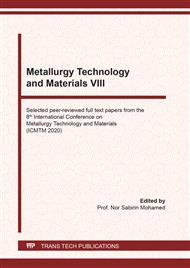p.77
p.84
p.90
p.96
p.101
p.109
p.114
p.120
p.128
Research on Vibrating L-Box Test and Yield Value of Low Water-Cement Ratio Concrete
Abstract:
The rheological properties of concrete have a great impact on the workability, and the L-box test can obtain the relationship between the morphology and the yield value of the material under free flow conditions. However, as an elastoplastic fluid, the low water-cement ratio concrete can hardly flow freely without the admixture. The vibrating process is often used in the production to meet the requirements, but the rheological properties of the material under vibration are difficult to measure. A new vibration test method for the flowability of low water-cement ratio concrete is proposed in combination with the L-box idea. The flow morphology and flow velocity of two kind of low water-cement ratio concrete in the L-box are observed under the condition of controlling the vibration frequency. After that, theoretically analyzing the yield value of the material under vibration is applied. The results show that with the increase of vibration frequency, the average flow velocity of the material increases, but the trend is gradually slower. With the increase of vibration frequency, the yield value of low water-cement ratio concrete is much lower than before. This test method can be used in related engineering applications of vibrating compacted concrete.
Info:
Periodical:
Pages:
120-127
Citation:
Online since:
March 2021
Authors:
Keywords:
Price:
Сopyright:
© 2021 Trans Tech Publications Ltd. All Rights Reserved
Share:
Citation:


